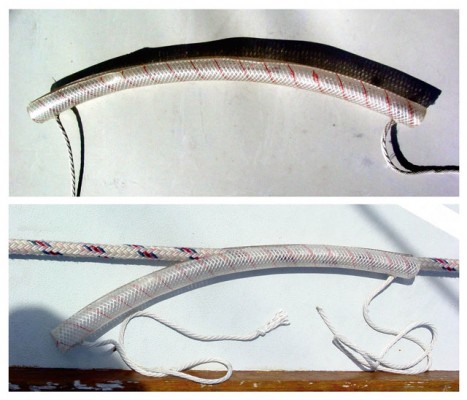Alex Blackwell makes his own mooring chafe protection, ensuring they're lashed to the line to stop them moving
For chafe protectors to be effective, they must be secured to the rope. If the rope moves inside the protector, this causes friction and that causes chafe – and the nylon fibres may also melt. If the protector is properly secured it will move with the rope as it stretches, so the protector will thus be abraded and not the rope. It’s important to routinely check the chafe protectors and swap them out as needed.
We make chafe protectors out of slit tubing and incorporate lanyards at either end. These can then
be slid over the rope before they’re lashed to it.
Capt. Alex Blackwell
We pay at least £30 for each tip published in PBO! Send us yours today…




